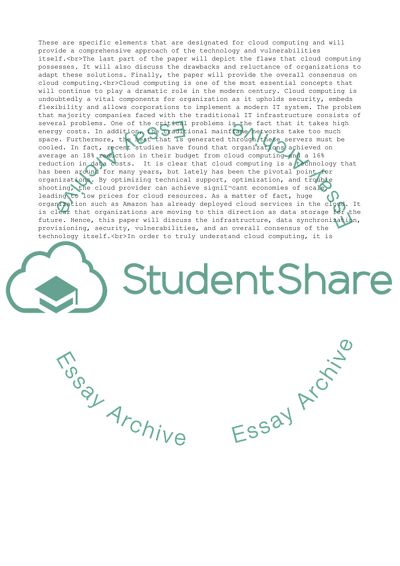Cite this document
(Cloud Computing Essay Example | Topics and Well Written Essays - 2500 words, n.d.)
Cloud Computing Essay Example | Topics and Well Written Essays - 2500 words. https://studentshare.org/information-technology/1809064-cloud-computing
Cloud Computing Essay Example | Topics and Well Written Essays - 2500 words. https://studentshare.org/information-technology/1809064-cloud-computing
(Cloud Computing Essay Example | Topics and Well Written Essays - 2500 Words)
Cloud Computing Essay Example | Topics and Well Written Essays - 2500 Words. https://studentshare.org/information-technology/1809064-cloud-computing.
Cloud Computing Essay Example | Topics and Well Written Essays - 2500 Words. https://studentshare.org/information-technology/1809064-cloud-computing.
“Cloud Computing Essay Example | Topics and Well Written Essays - 2500 Words”. https://studentshare.org/information-technology/1809064-cloud-computing.


